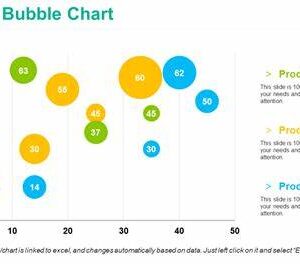In today’s digital landscape, cybersecurity has become a critical concern for businesses, governments, and individuals alike. As cyberattacks become more sophisticated and frequent, traditional security measures are often struggling to keep up. This is where Artificial Intelligence (AI) steps in, revolutionizing the way we protect our data, networks, and systems. By leveraging AI, cybersecurity is no longer solely reactive but has become proactive, capable of predicting and preventing attacks before they happen. Let’s explore the growing role of AI in cybersecurity and how it’s shaping the future of digital defense.
1. AI as a Threat Detection System
One of the most powerful capabilities of AI in cybersecurity is its ability to detect threats in real time. Traditional cybersecurity methods often rely on signature-based detection, which involves recognizing patterns of known threats. However, this approach is limited when it comes to identifying new, unknown threats. AI, on the other hand, uses machine learning (ML) algorithms to analyze vast amounts of data and detect anomalies or patterns that may signal an attack.
AI-powered systems can sift through enormous volumes of data much faster than humans, making them ideal for spotting hidden threats such as malware, ransomware, or phishing attempts. Over time, as AI learns from past attacks, it improves its detection accuracy, reducing the likelihood of a successful cyberattack. By identifying suspicious activities early, AI allows cybersecurity teams to respond quickly and neutralize threats before they escalate.
2. Automating Incident Response
In the past, responding to cyber incidents often involved lengthy and manual processes. With AI, incident response has become far more automated. AI-powered security systems can automatically isolate infected systems, block malicious traffic, and even patch vulnerabilities—all without human intervention. This immediate response helps to mitigate the damage caused by an attack and minimizes downtime for organizations.
Furthermore, AI can assist cybersecurity professionals by offering insights and recommendations during an attack, allowing them to make informed decisions more rapidly. This speed is especially critical in situations like Distributed Denial of Service (DDoS) attacks, where fast mitigation is required to prevent major disruptions.
3. AI in Predictive Analytics
One of the most exciting applications of AI in cybersecurity is its ability to predict and prevent future attacks. By analyzing historical data and trends, AI can build predictive models to identify potential vulnerabilities and weaknesses in a system before they are exploited by cybercriminals. These predictive capabilities allow organizations to take a more proactive approach to security, fortifying defenses before threats materialize.
AI’s predictive power is also useful for anticipating emerging attack strategies. As cybercriminals develop new tactics and methods, AI can quickly adapt to recognize these novel threats, providing a dynamic layer of defense that can keep up with the evolving threat landscape.
4. AI in Identity and Access Management (IAM)
Managing user identities and access to systems is a cornerstone of cybersecurity, and AI has a significant role to play in this area. AI can enhance traditional identity and access management by employing biometric systems (such as facial recognition or fingerprint scanning) to authenticate users, reducing the reliance on passwords, which can be easily stolen or hacked.
Additionally, AI can continuously monitor user behavior, flagging any deviations from normal activities. For example, if a user suddenly accesses sensitive data at an unusual hour or from an unfamiliar location, AI-powered systems can trigger alerts or lock access until the activity is verified. This real-time monitoring ensures that unauthorized access is detected immediately, preventing data breaches and other security incidents.
5. Enhanced Malware Detection and Prevention
Malware is one of the most common and dangerous forms of cyberattack. Traditional antivirus software relies on signature databases to detect known malware, but new types of malware can bypass these systems. AI, however, can go beyond signature-based detection to identify malicious behavior by analyzing how files interact with systems and networks.
AI-powered systems can analyze code behavior and recognize characteristics of both known and unknown malware. By leveraging deep learning models, AI can identify new variants of malware as they emerge and neutralize them in real time. This is especially important as malware becomes increasingly complex, capable of evading traditional detection methods by constantly changing its code.
6. Fraud Detection and Prevention
AI is increasingly being used to detect and prevent fraud, particularly in industries such as banking, insurance, and e-commerce. AI systems can analyze transaction patterns and identify any activity that deviates from the norm, such as an unusual purchase or an attempt to access a financial account from a foreign location.
Machine learning models can continuously improve their fraud detection capabilities, recognizing new patterns and adapting to new fraud tactics. This helps businesses not only detect fraud more effectively but also reduce false positives, ensuring that legitimate transactions are not blocked in the process.
7. Challenges and Ethical Considerations
While AI offers incredible potential in enhancing cybersecurity, its integration does not come without challenges. One of the primary concerns is the risk of adversarial attacks, where cybercriminals may attempt to deceive AI systems into misidentifying legitimate activity as malicious. Additionally, the complexity of AI models can sometimes make them difficult to interpret, which can lead to issues of accountability in cybersecurity incidents.
Moreover, there are ethical concerns related to privacy and surveillance, especially when AI is used for monitoring user behavior or analyzing personal data. It’s important for organizations to balance security with the need to protect user privacy and ensure that AI systems are used responsibly and transparently.
The Future of AI in Cybersecurity
Looking ahead, the role of AI in cybersecurity is set to grow even more. As cyberattacks become more advanced, AI will continue to be a vital tool in outsmarting cybercriminals. The future of cybersecurity will likely see a combination of AI and human expertise, where AI handles routine tasks like threat detection and response, while human analysts focus on more complex, strategic decision-making.
With advancements in AI research, we can expect even more sophisticated systems capable of predicting and neutralizing attacks before they happen. As organizations continue to digitize and rely on cloud services, AI will be an essential safeguard in keeping their digital assets secure.
Conclusion
The role of Artificial Intelligence in cybersecurity cannot be overstated. As cyber threats continue to grow in complexity and volume, AI provides a critical line of defense by enhancing threat detection, automating incident response, and predicting future attacks. While challenges remain, the benefits of AI in cybersecurity far outweigh the risks. By leveraging AI, businesses and organizations can stay one step ahead of cybercriminals and protect their valuable digital assets in an increasingly connected world.
In this digital age, AI is not just an added layer of security—it is becoming the backbone of a robust cybersecurity infrastructure. The future of digital security is intelligent, adaptive, and powered by AI.














